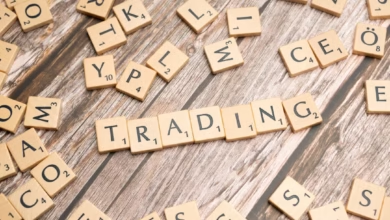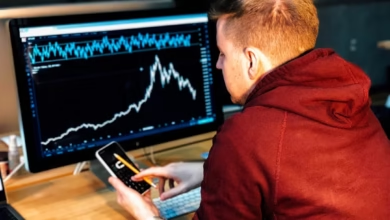Mastering Futures Trading: Key Differences, Risk Management, and Winning Strategies Compared to Stocks, Forex, and Other Trading Markets

Futures trading has become a cornerstone of modern finance, drawing attention from traders seeking to capitalize on market movements in equities, commodities, energy, and more. Unlike stock trading or forex trading, futures trading centers around standardized contracts to buy or sell assets such as wheat, gold, oil, stock indices, or even cryptocurrencies at predetermined prices on set dates. This unique approach to derivatives trading requires a solid understanding of risk management, trading psychology, and diverse trading strategies, including day trading, swing trading, and even algorithmic trading.
In today's dynamic landscape, online trading platforms offer unprecedented access to a variety of futures markets—from commodities trading and index trading to crypto trading and energy trading. With the rise of leveraged products, margin trading, and complex strategies like arbitrage trading and scalping, success demands more than basic knowledge. It calls for a strong grasp of technical analysis, fundamental analysis, and an ability to adapt trading strategies to shifting market conditions.
This article provides a comprehensive exploration of the futures trading ecosystem. We'll begin by unraveling the fundamentals, key markets, and range of assets involved. Next, we'll break down how futures trading stands apart from stock trading, forex trading, options trading, CFD trading, ETF trading, and other popular forms of derivatives trading. Finally, we'll dive into essential risk management techniques and robust trading strategies—from copy trading and social trading to binary options and high-frequency trading—that can help you thrive in the fast-paced world of futures markets. Whether you're a newcomer or an experienced trader seeking new angles, this guide delivers actionable insights for mastering futures trading.
- 1. Understanding Futures Trading: Fundamentals, Key Markets, and Types of Assets
- 2. How Futures Trading Differs from Stock Trading, Forex Trading, and Other Derivatives
- 3. Essential Risk Management and Trading Strategies for Success in Futures Markets
1. Understanding Futures Trading: Fundamentals, Key Markets, and Types of Assets
Futures trading is a branch of derivatives trading that enables participants to agree on the purchase or sale of an asset at a specified price on a future date. Unlike traditional stock trading, where investors buy and sell shares for immediate delivery, futures contracts commit both buyers and sellers to transactions that will occur later, making risk management and speculation key components of this market.
At its core, futures trading centers around standardized contracts. These agreements exist for a variety of underlying assets, including commodities trading (think oil, gold, and agricultural products), index trading (such as S&P 500 futures), forex trading (currency pairs), and even cryptocurrency trading. Futures can also be written on financial instruments like ETFs and interest rates. Recently, digital assets and energy trading contracts have expanded the range of offerings, attracting both retail and institutional traders seeking diversification and leverage trading opportunities.
The global reach of futures markets is vast. Key venues include the Chicago Mercantile Exchange (CME), which facilitates not only commodities and index futures but also popular forex and crypto trading contracts. The Intercontinental Exchange (ICE) and Eurex are also prominent, offering contracts for financial instruments and energy products. Online trading platforms now make access to these markets easier—for both day trading and swing trading strategies.
There are several types of futures contracts based on the underlying asset. Commodity futures cover resources like crude oil, natural gas, wheat, and gold—core markets for those interested in energy trading and raw materials. Financial futures encompass index trading, where traders speculate on the performance of broad market indices, and currency futures, important for those engaged in forex trading. With the rapid evolution of blockchain technology, bitcoin and other crypto futures now attract traders utilizing high-frequency trading and algorithmic trading methods.
Futures contracts are central to a wide range of trading styles. Day trading and scalping emphasize short-term moves, while swing trading typically covers longer horizons. Advanced participants may use arbitrage trading or pair futures with options trading, margin trading, or CFD trading to pursue diverse trading strategies. Many engage with technical analysis, fundamental analysis, and even social trading or copy trading networks to refine their market analysis and adapt to market volatility.
Risk management plays a crucial role in successful futures trading because leverage magnifies both gains and potential losses. Understanding trading psychology is equally essential, as emotional discipline can be the difference between consistent returns and significant drawdowns. As futures markets continue to evolve—spurred by innovation in ETF trading, binary options, and online communities—they offer expanding opportunities for traders willing to invest in research, education, and sound strategy development.
2. How Futures Trading Differs from Stock Trading, Forex Trading, and Other Derivatives
Futures trading stands out among various trading approaches because of its unique contract structure and the obligations it imposes on both buyers and sellers. Unlike stock trading, where participants buy and sell shares of companies to gain partial ownership and possibly earn dividends, futures trading is centered around agreements to transact a specific asset—such as commodities, indexes, or currencies—at a predetermined price and date in the future. This difference is critical for traders developing their trading strategies, since holding a futures contract until expiration typically results in mandatory delivery or cash settlement, while stocks can be held indefinitely.
When compared to forex trading, which focuses on the exchange of currency pairs in the global foreign exchange market, futures trading offers more diverse underlying assets—including energy, agricultural products, metals, and even cryptocurrencies (crypto trading). Forex trading is typically conducted in a spot market with immediate settlement, whereas futures contracts are traded on regulated exchanges and standardized in both quantity and quality, making them ideal for both swing trading and day trading.
Other derivatives trading forms, such as options trading and CFD trading (Contracts for Difference), also differ meaningfully from futures trading. In options trading, the buyer acquires the right but not the obligation to buy or sell an underlying asset, allowing for more flexibility in risk management and trading psychology. CFD trading, meanwhile, enables traders to speculate on price movements without owning the real asset, leveraging smaller capital requirements and easier access to algorithmic trading or copy trading features via online trading platforms.
Additionally, leverage and margin trading are more commonplace and more pronounced in futures contracts, increasing both the potential rewards—and risks. Both futures and binary options are subject to strict margin requirements but differ in payoff structure and complexity; binary options offer fixed payouts, while futures trading exposes traders to unlimited gains or losses depending on price movements at contract expiration.
Futures trading is also highly attractive for institutional traders, market makers, and those engaged in high-frequency trading or arbitrage trading due to its deep liquidity and transparency. It frequently features in commodities trading, index trading, and energy trading, but can also support sophisticated ETF trading strategies.
Traders in this arena rely heavily on technical analysis and fundamental analysis to forecast price trends and manage portfolios effectively. The finite contract life of futures contrasts with the open-ended nature of most stock trades, prompting a different mindset concerning position management, rollover strategies, and risk management.
In summary, the highly standardized, leveraged, and time-bound nature of futures trading separates it from stock trading, forex trading, and other derivatives trading types. Understanding these differences allows traders to choose appropriate markets, platforms, and strategies in alignment with their goals, risk tolerance, and preferred market analysis techniques.
3. Essential Risk Management and Trading Strategies for Success in Futures Markets
Mastering risk management is crucial for success in futures trading and other dynamic markets such as stock trading, forex trading, and crypto trading. Futures trading allows traders to take leveraged positions, magnifying both potential gains and losses. Therefore, employing a robust combination of risk management techniques and tailored trading strategies is essential, whether you focus on day trading, swing trading, or algorithmic trading.
Effective Risk Management Approaches
– Set Stop-Loss and Take-Profit Orders: Establishing stop-loss and take-profit parameters ensures that losses are contained and profits are secured automatically. This practice is vital in high-volatility environments like commodities trading, CFD trading, and index trading.
– Use Proper Position Sizing: Calculating position sizes based on capital allocation and market volatility can help traders avoid catastrophic losses, especially when employing margin trading or leverage trading.
– Diversify Across Markets: Spreading risk through different asset classes—like ETF trading, binary options, or energy trading—can reduce overall portfolio risk and volatility.
– Avoid Emotional Decisions: Maintaining emotional discipline and following a well-defined trading plan helps minimize impulsive trades driven by fear or greed, which is central to strong trading psychology.
Key Trading Strategies for Futures Markets
– Technical Analysis: Utilizing charts, price patterns, and indicators like moving averages and Relative Strength Index (RSI) forms the backbone of most trading strategies, especially in scalping, high-frequency trading, and copy trading.
– Fundamental Analysis: Analyzing underlying economic, sectoral, or company data can offer long-term trading insights, valuable for both swing trading and derivatives trading. This method is particularly relevant in commodities trading and energy trading.
– Trend Following: Identifying and riding major market trends can support profits, especially when combined with technical analysis and adaptive risk management tactics.
– Arbitrage Trading: Exploiting price discrepancies between different markets or contracts, such as futures versus spot prices, can generate low-risk returns, aided by advanced algorithmic trading systems and online trading platforms.
– Backtesting and Strategy Optimization: Testing trading strategies with historical data helps determine their effectiveness and enhances confidence before real capital is deployed.
Practical Tips for Sustainable Futures Trading
– Leverage Education: Continuously learning about diverse products, from options trading to social trading and index trading, sharpens skills and awareness of risk factors.
– Monitor Margin Requirements: Stay updated on broker and exchange margin rules to avoid forced liquidations, particularly if engaging in high-leverage or CFD trading.
– Use Automated Tools: Modern online trading platforms offer risk management features like limit orders, portfolio analytics, and even AI-driven alerts to support smarter trading decisions.
By integrating comprehensive market analysis, consistent risk controls, and personalized trading strategies, traders can improve their chances of long-term success in the diverse and fast-paced landscape of futures trading.
References
– Choudhry, M. (2019). The Basics of Risk Management in Trading. Wiley Online Library. https://onlinelibrary.wiley.com/
– CME Group. (2023). Managing Futures Trading Risk – Best Practices. https://www.cmegroup.com/
– Investopedia. (2024). Futures Trading Strategies. https://www.investopedia.com/articles/active-trading/062315/futures-trading-strategies.aspx
In conclusion, understanding the fundamentals of futures trading unlocks a vast world of opportunities across diverse asset classes—from commodities trading and crypto trading to index trading and energy trading. Unlike stock trading or forex trading, futures trading offers unique advantages such as leverage trading and margin trading, but also introduces higher risks that demand robust risk management and sound trading psychology. Whether you are engaging in day trading, swing trading, scalping, or employing algorithmic trading and high-frequency trading, having a clear grasp of technical analysis, fundamental analysis, and effective trading strategies is essential for successful derivatives trading.
The differences between futures trading and other forms—like options trading, CFD trading, or even ETF trading and binary options—highlight the need for traders to adapt their approach to fit the market’s dynamics. Utilizing online trading platforms, market analysis tools, and, when appropriate, social trading or copy trading can enhance your edge in rapidly evolving futures markets. Ultimately, approaching futures trading with discipline, ongoing education, and a well-devised risk management plan can help you navigate volatility and seize profitable opportunities. By leveraging the right strategies and maintaining a keen awareness of market movements, you can position yourself for long-term success in the dynamic ecosystem of online trading.





